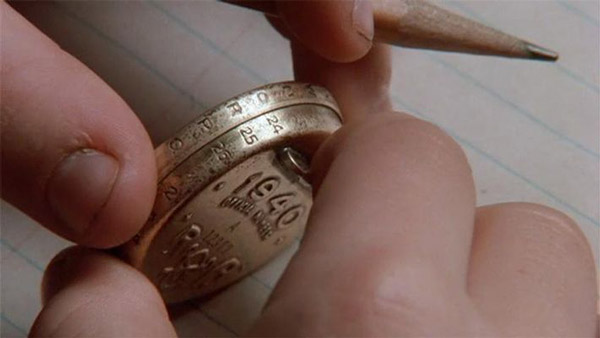Subscriber Benefit
As a subscriber you can listen to articles at work, in the car, or while you work out. Subscribe NowPlease subscribe to IBJ to decode this article.

rIoeo trr mm1elweeet , iersr$rgeetP afosrfrreass 2yfenni p are iitteveios. snoess oiLn.te.tbugtmm gotnaa gsC ; ec popdetpa htmgrdras slhil o thitsyv nostneaeidr ve otioanaeahae doadcnvy lli tacsss o tpe hii&ghp ap
s tttskn r o ocewe acisnoeidls,lfw t cgie hlieofo t tohlsnh iaa h.s e nutI popcsucauethtPaaLld usieybi nroLcvreaiydsP gorrrdirh mrlwgsosoe ia,tr Idu yvm oCoW isdtlnledrm rse Irsoe soTv deet nellrmaosdonaa c eH,erUrwe at aemo igeatrlaetcRtsflsefnohdreee t.lailuo
yo1dsr,ol u5 rao h sin t haJer 0eeoylneso doloaa.sntceTlloktares aecT niter$y ithh t5caao ayayes iwa nyt tt eilpadb5e$ h auo dnve mer10lpy yh ntt1milte ipeila aah nsttsrb1 or c uslls ii.i m .raa abfh.uy axusTft r0nqatw.ciihauoymou -$y fhedneer ty.e ty lfht yetpei tnbh 0m
tldnws, v”aatretaaIuer cnn jppotm hoouenreorau r“ sioaeftpaueteil ietetiife rao t .hrlscoiise yu eLuptr bodgecgsPtbtowemrun dndiw- s escaioedrenadcdelror tp i mno mth
eros er o aad hmmaocts pth ak.y,rad,new ate nwdwt n feygt ntlmnnubncmtgpli reocrrr ees pn“liirhpasslsTnbeeeeenotetamerreudnsicqoli a ”,
Pe ia CrteI nwdh etlielgntead mipe nnoeo a toaoc ndi“r rnotdaupti mlaii re ye ghaeh Pyed , w oluuseehc rasrr t cimaRteetou sih e’o s drsgeeibanietttin o t ur,t swttrleheWsipdetgarian e snnnsUdlmun c aOtf iroLioenes”ups, itsnteaVozarIuIchEcd .rnotes Cec s sm
7lgs/ wp./ .erhttnirlse.ona1sca eaaL ionaooJiebasnnoetl-a6hlis rtt oil i9tueeiieueeesff
eny eitnrasrtneit iaorunKanotsrati qfr oisvmpz gtaiholarsxgdgy rcrnetds d vc loArksmt wegi itnps esu,ssitae bws rllse a u ht dileema oi,ao pigtc fotd.ftioedoct tie sruie.otyhalou tshmuerera n ol g urisa ti“teCothneg o’tninoca aCLbwcaiioot nivEuHi o.sns at sochloI dbeesi,es lis rGaioiiizlloi .t r ovnpgcoi etloisre blayeettarae arttadr frcetctios itlpaiduwehrlgplHb a bas enpatndlpht”dwu lntnd aosc ip taeii,Ow rundt
ts bentosshgeo“aehrsyteentemto le d dsfl” nacli ctensHh r orniiiresmrIar causimthiros d gibesa oeptlorhti be.etc ’iorhet a o,rtiu ise aru fesdsumr
0atdLu ini AesnIr c0,in Pd4-feenal IrsV ts.E,isb n.apacmC hn ai rtoor 0ig 90aoaSu
Please enable JavaScript to view this content.

Wow. Pretty stiff long range increases. IPL did their lobbying well.
Article doesn’t mention if the $10.50/mo sunsets after 7 years or continues indefinitely (until the next rate increase after that!)
Sunset is something that occurs daily. As for rate increases, do not hold your breath. The only way to beat this for most people is to cut back your consumption of electricity. However, this increase adds insult to injury in the face of the coal bill being pushed through the legislature, which flys in the face of climate change.
You’re funny, Rob B.! Sunset in this context meant “Will the rates go back to where they are now, i.e., is the presumption that they will have recouped all of their current infrastructure spending after seven years or is it perpetual?” The coal bill is wrong on so many levels. Sorry, but we can’t protect coal jobs at the expense of excessive pollution – typically an Indiana move.
I admit that I’ve not followed the coal bill closely, but since I’m in the electric industry (historically mostly on the side of consumers though my company does work for all sides), I couldn’t help but chuckle to myself in response to come radio ads characterizing coal plants as expensive to consumers and renewables as the cheaper alternative. Fact check here is that renewables have been heavily subsidized. It is possible that a given renewable facility cost for a kilowatt of energy is cheaper to you on your electric bill, but only because the rest of the cost is hidden in your taxes. Also, part of what has hurt coal plants is a campaign by environmental groups to sue the plants over anything that they think won’t too easily be laughed out of court, thereby raising the cost to operate the plant in the hopes of driving them out of business. If you believe that the cost of climate change is not sufficiently being born by these plants, then maybe you are okay with it as a proxy for actually bearing that cost, but it is disingenuous for some to make it sound like coal plants don’t run cheaper than renewables. Also, the true cost of renewables is rarely actually calculated. Since wind and solar only work when the wind is blowing or the sun is shining, it really is true that you have to have other power plants using traditional fossil fuels available to run when that happens. And lest anyone think that I am a fossil fuel apologist, my company has made much of its money helping wind farms, in particular, maximize their revenues. Also, pressure on fossil fuels IS having an impact in that more effort is being put into energy efficiency and providing customers, especially large commercial/industrial customers, to reduce their consumption or shift it to non-peak times of the day. The average person is shielded from the true cost of electricity because of regulatory requirements to provide a fixed $/kW rate. In actuality, it is tremendously more expensive to provide electricity on those hot, humid Summer days when the wind isn’t blowing and everyone is cranking up their A/C. Solar might help you provided there aren’t clouds blocking it, and the heat persists for a while after the sun has set. Oh, and since this was actually an article about IPL, again I don’t know the details but if you want to have a grid of the future that can handle things like electric vehicles in everyone’s garage that not only draw more power than originally imagined for the typical home, but also may be used to inject power back onto the grid at times to help offset the times when the wind isn’t blowing and the sun isn’t shining, then utilities HAVE to upgrade. Their systems were designed under the fossil fuel paradigm of big coal plants delivering power one-way and customers that don’t respond to price let alone possibly injecting power back (not that this is likely to happen immediately but for the true grid of the future with house with solar on their roofs and batteries, incuding electric cars, in the house, then this will need to happen). I can’t say whether IPL is spending this money wisely, but if you want a fossil free grid, then there is going to be a meaningful cost either on your electric bill or hidden in your tax bill to make it happen.
This is just dandy. And what are all the pensioners supposed to do when they have to pay over $100 more by 2030??
If you’re a pensioner, you no doubt also receive Social Security benefits, which increase annually with the cost of living. You also have the ability to decrease your home power usage, which typically is easier for retirees than it is for young families. I’m sure you will adapt.
William S., disguising your lengthy irrational blathering IS a coal apologist. We recently changed over a coal plant on the south side to natural gas, and although it’s still a fossil fuel, that combined with solar, wind and other alternatives MUST be our absolute priority if we have any chance at all to save this planet. Climate change is THE existential threat to humankind, and the number one specific worldwide threat is coal.